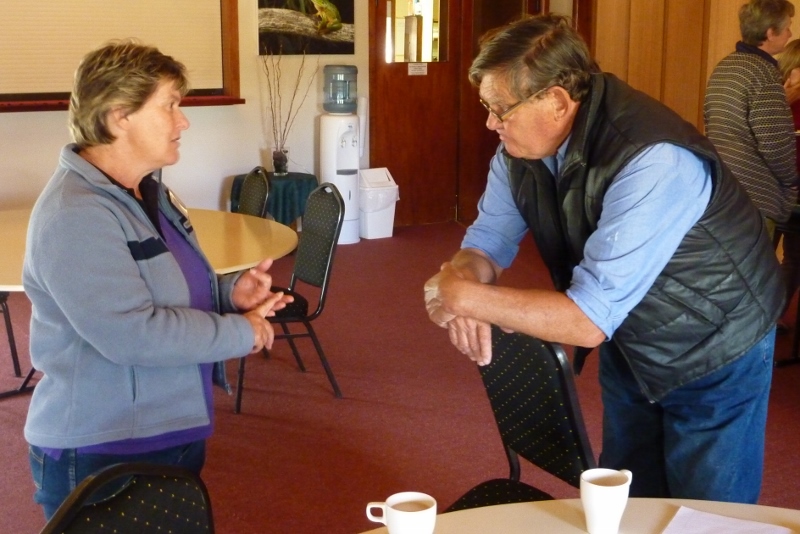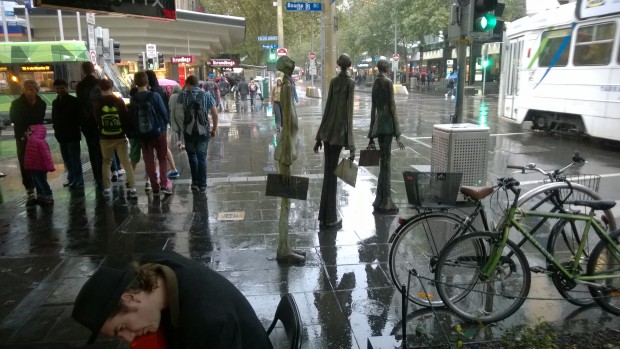It’s mid-summer and the weather is mild, the birdsong sweet, the bushfire season just begun. I’ve been hearing about the thinning of bird populations at Ann Jones’ Off-Track (ABC Radio National) and reading about it in the New York Review of Books (“What’s Happening to the Bees and Butterflies?”). Industrial expansion is eating into the inter-tidal zone where migratory birds feed, and the immediacy of their critique take me back to an old dilemma: How do the few people passionate about any matter (like declining bird populations) keep in touch with and support each other? I chanced upon the stories I mentioned, above, but how would I find others interested in loss of habitat for migratory birds, or thinning of bird populations? Or how to monitor the thickness of the bird populations in my own locality?
My day job is the social project of taking situations of social concern and learning like crazy. A first step is to find the people who give a damn, and the places they interact, because it’s here, in the interplay between knowledgeable and caring people, that knowledge is held and created. What we know is made in the intersubjective space, and though the myopia of me, me, me obscures this.
The internet was going to connect us to each other. It’s speciality unless adroitly managed, seems to be divergence, not places to converse. Example: I went looking for more on the “Australasian flyway”, the vast route between the poles that Ann Jones is investigating, I put the word ‘Australasian beltway” into Google. Did you know that on January 12, 2015, someone posted a comment on Australia’s Highway 1 as a beltway, a road that encircles a geographic area, noting that this road is the longest beltway in the world.This piece of Oz-trivia was on a site Greater Greater Washington, a website for
“a community of people who want to live and work in communities with sidewalks, bike lanes, and frequent transit; with grocery stores, parks, and plenty of housing choices at attainable prices; that is accessible and welcoming to people of all income levels and backgrounds.”
The posting on the patchwork of Highway 1 spoke of someone with a fine-grained understanding of a macro-level transport phenomena, and I marveled how the web makes space for specialist interests. If I was into the transport infrastructure system of Washington DC, I’d hang about on that website, and see what else that person was saying, and who else was there. Maybe we could talk. Maybe we could meet up.
I’m in the ‘natural resource management’ sector, and the social side of that what’s more, a practitioner of the frail arts of supporting social learning. Where do my people hang out? I try the digital, but each time my net has few pickings. Think lateral, I tell myself, and I’ve ended up the P2P, Commons transition world. NRM people on the social side don’t seem to convene online, and I wonder why. Perhaps we’re each so exhausted from holding our ground in the war of attrition that email has become, that we don’t build other facilities. The Landcare Share Centre, the Victorian Landcare Magazine, the Landcare Gateway, LAL’s Landcare in Focus, the video stories appearing on the websites of CMAs – these are signposts pointing to the creative people in Landcare, but not places to talk.
Yes, the face-to-face is the gold standard, the place where the intersubjective space is most generous and productive. But the fast, light connections of the internet might let us at least find people interested in similar interests, obsessions and questions. Craving lightness, weightlessness, Laurie Anderson’s poignant question – “How do we begin again?” – pushes me back down into the ground. I want to wind down a bit, but as a Baby-Boomer, I feel some responsibility for the last 50 years of destruction. To carry my responsibilities, I need company. How to find it is one of my Questions Without an Easy Answer.


